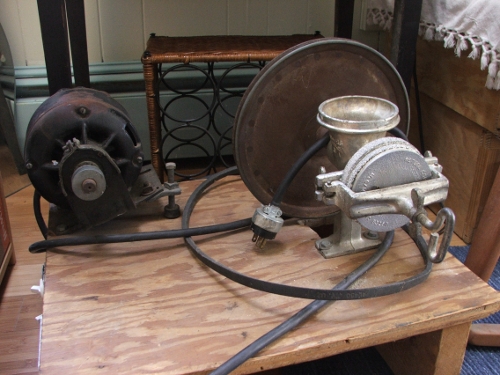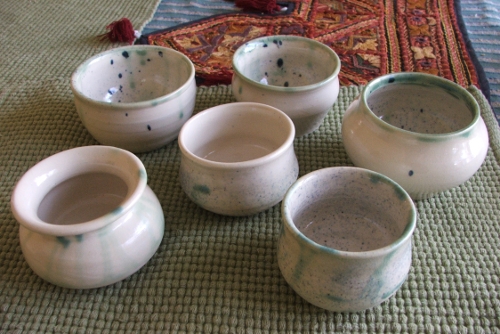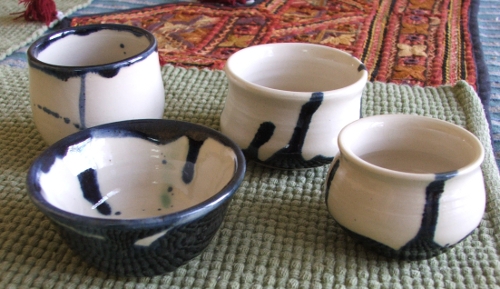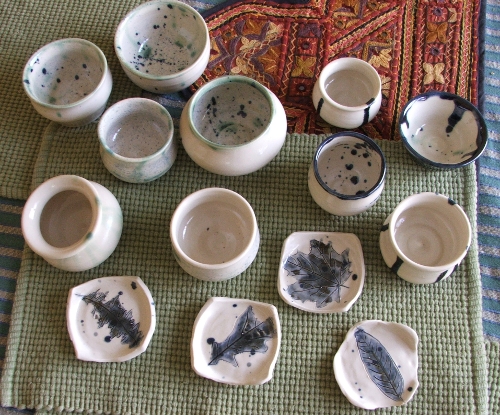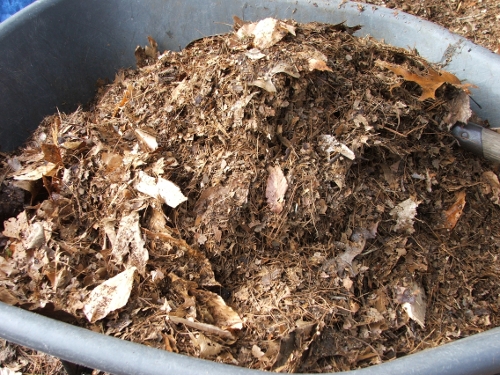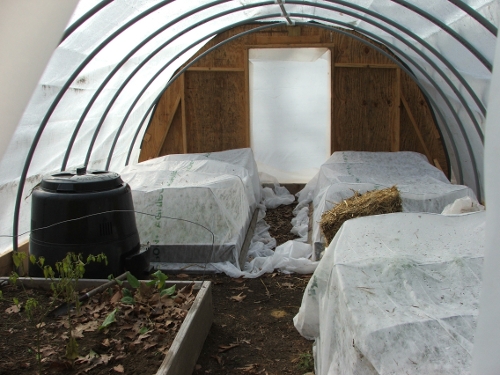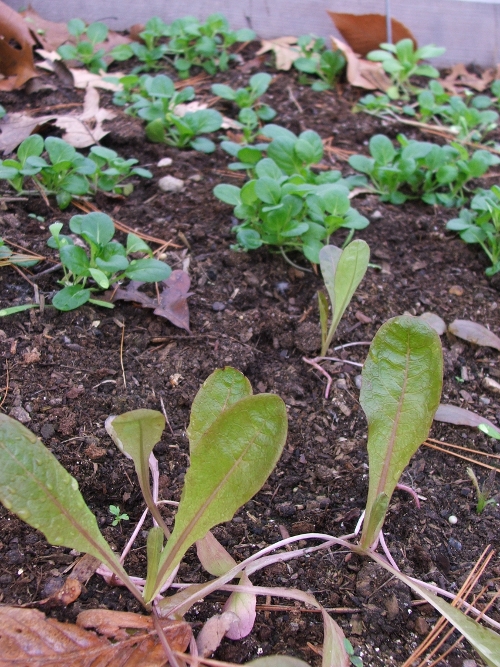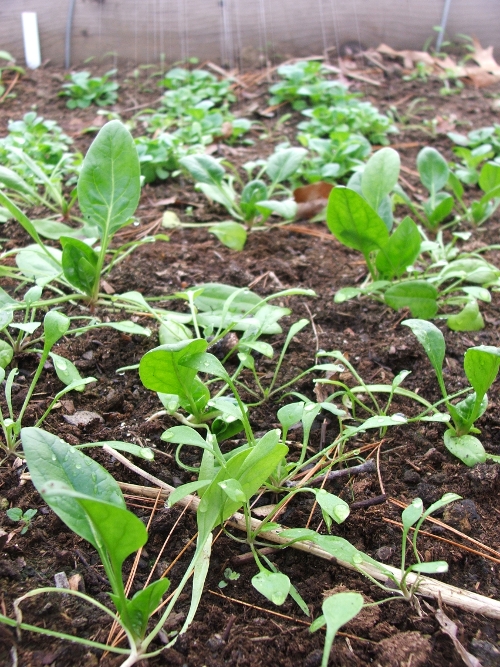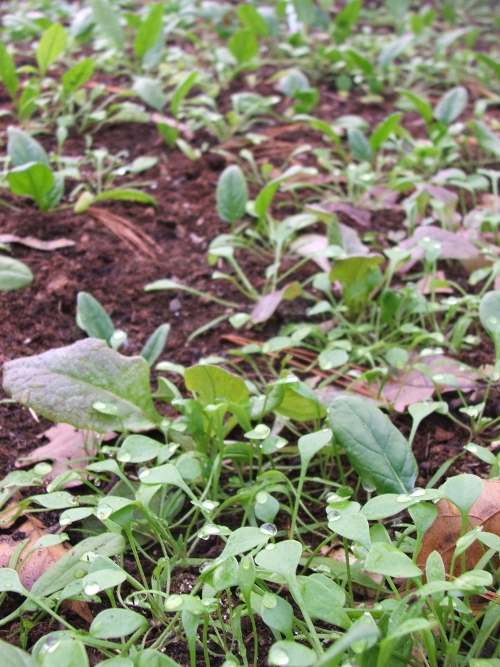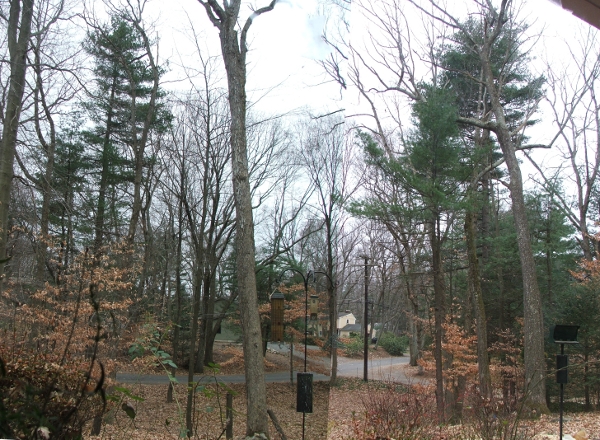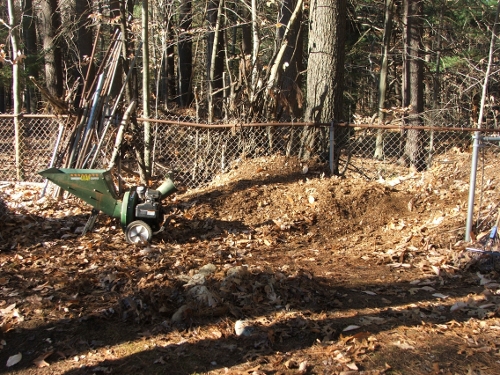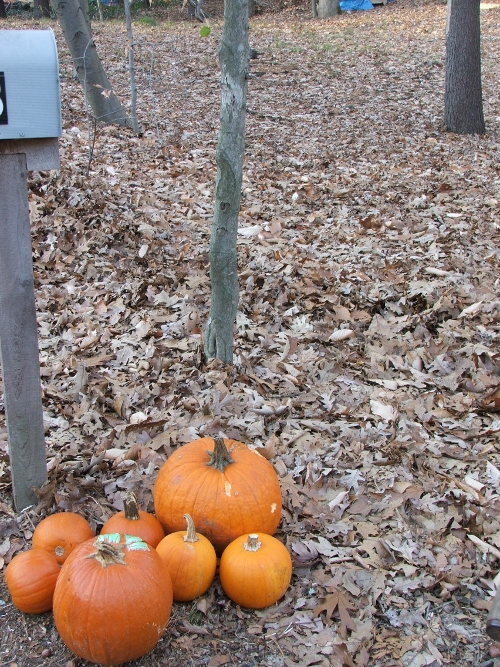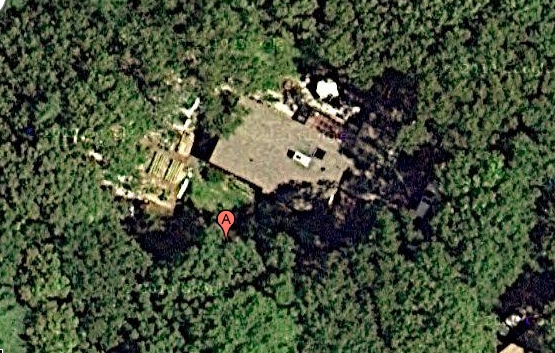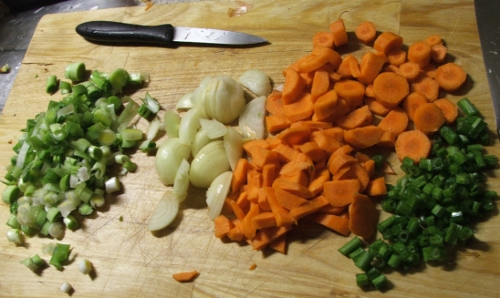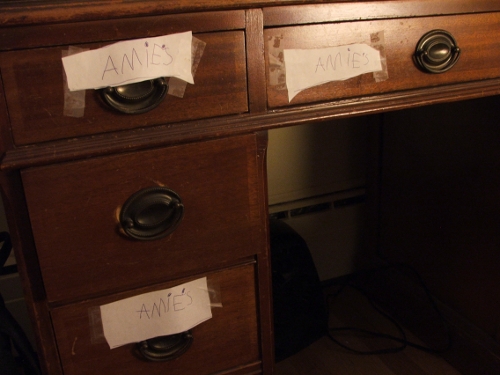(Oh no, it’s another series!)
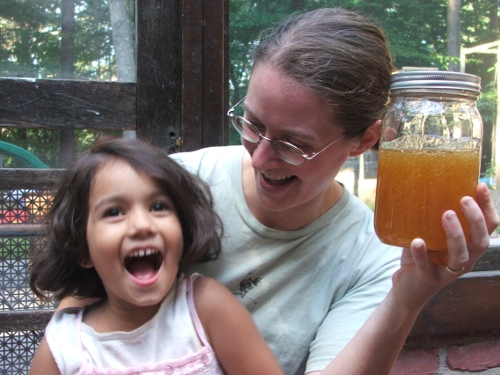
Amie and Mama and their first honey harvest
~
I’m so sore from my workout yesterday. I was shredding leaves for two hours and also moved the contents of one (full) outside Earth machine to the Earth Machine inside the hoop house. Going by last year’s experience, this compost won’t freeze and will keep going if I turn it once in a while. It’ll absorb, retain and even create heat inside the hoop house, and make compost, of course. The moving had to happen with buckets, because the wheelbarrow doesn’t fit through the hoop house door, and so I’m sore, and so today is a day of book learning.
~

I’ve been benefiting tremendously from honey – nipped two colds in the bud with it so far – and am on the lookout for a good book that tells me all about honey, pollen, propolis and other so called “products” of the hive. Everything, that is, about how the bees use and make it, what it consists of, how to harvest it, how to cure it if it needs curing, extract it if it can be extracted, and how those foods and medicinals work. I haven’t found that book yet, but I did find some pieces of the puzzle in this little book by C. Leigh Broadhurst (Basic Health Publications, 2005). Each of its 85 small pages is packed with nutritional and medicinal information. (Warning: If you are upset by animal testing, expect this text to refer to some horrendous scientific tests on animals.)
I’ve gathered and digested some interesting data from this book and Wikipedia for you. Let’s begin with honey.
~
Honey, when capped by the bees, is ready for consumption by the bees and by us, containing only 15-21% water (by weight). Uncapped honey as yet contains more water – the bees haven’t cured it enough – and will ferment if extracted. Besides water it consists almost entirely of carbohydrates: mostly simple sugars like glucose and fructose, and some sucrose, maltose and other sugars.
A small percentage of honey consists of phytochemicals. These comes from the nectar source plants. These phytochemicals give (raw, unprocessed) honeys their distinct taste and aroma. They also confer medicinal benefits, because the plants made them to protect themselves from the bad effects of excess free radicals. These phytochemicals survive in raw honey and are passed on to us when we eat it. And what works for plants, works for us, because we too can suffer from excess ROM.
- Reactive Oxygen Metabolites or Free Radicals
Reactive Oxygen Metabolites (ROM) – a type of “free radical” – are naturally created as byproducts of metabolism. The cells in plant and animal bodies are composed of many different types of molecules, which in turn consist of one or more atoms of one or more elements joined by chemical bonds. When cells metabolize (convert of food into energy), there occurs a chemical reaction that transfers electrons from a substance to an oxidizing agent. This reshuffling of electrons often results in ROM, oxygen molecules with an unpaired electron.
ROM are unstable and highly chemically reactive, attacking the nearest stable molecules and stealing an electron from them to gain stability. The attacked molecule then becomes a free radical itself.
- Out-of-Control Immune Response
Sometimes this process is a desired one, actively created by the immune system, for ROM will also attack harmful bacteria and viruses and other pathogens. They also prompt enzymes that sterilize wounds by inflaming, heating the damaged tissue (making it swell) and thus flushing tissues of toxic substances.
However, the chain reaction of radicals creating radicals can get out of control, cascading into excess ROM. This inflames when inflammation is no longer necessary, causing chronic inflammatory conditions, like asthma, arthritis, tendonitis and ulcers.
An out-of-control ROM chain-reaction destroys cell membranes, reprograms DNA, forms mutant cells, causing cancer, Parkinson’s and Alzheimer’s, stroke, diabetes, even schizophrenia. And the older we get, the more our cells suffer from such “oxidative stress”.
Now plant and human bodies can generally prevent this with chemical compounds called anti-oxidants. These terminate the chain of oxidation reactions by being oxidized themselves without in turn becoming free radicals. So, Broadhurst writes, they “act like chemical sacrificial lambs,” neutralizing ROM before they can irritate our cells. (p.9)
Human bodies make their own antioxidant compounds, like bilirubin, uric acid, superoxide dismutases, catalase, glutathione peroxidase, etc. But luckily, many of the antioxidant compounds in plants, especially fruits, vegetables and herbs also work for us. We can ingest their carotenoids, tocopherols, ascorbate, bioflavonoids, etc. directly, or indirectly by eating honey.
It is no wonder, then, that certain substances are the opposite of these beneficial foods. Polluted air and water, radiation, cigarette smoke and herbicides come with free radicals. So do refined foods, like hydrogenated and partially hydrogenated oils, most other heated oils, table sugar (sucrose, dextrose, corn syrup, high fructose corn syrup) and white flours. None of these contain antioxidants, so the disastrous chain reaction is unchecked in them. When we ingest these, we basically flood our bodies with ROM.
- Antioxidants in Honey: Phenolics
Water tupelo, Hawaiian Christmas Berry, and sunflower honey have a high antioxidant content, but they are well outmatched by buckwheat honey. Buckwheat honey has a dark brown color and a distinctive taste and aroma, imparted to it by a type of antioxidant called phenolics. All flavenoids, for instance, are phenolics. So, the darker a honey, the more phenolics it contains.
Other antioxidant compounds in honey are vitamin C (ascorbic acid), malic, gluconic and cinnamic.
All these antioxidants also give honey its incredibly long shelf life and make it an excellent preservative for other foods.
Broadhurst warns that honey should not be thought of as a substitute for fruits and vegetables. It is a “processed product,” processed by the bees, and thus contains fewer antioxidants than fruits and vegetables (as well as much more sugar).
Heating and processing honey will destroy the vitamin C and the other antioxidant contents of honey. So eat honey raw and unheated.
~
That’s not all that honey does for us, but you’ve guessed it… TBC!

